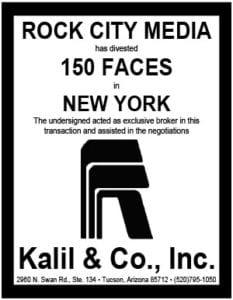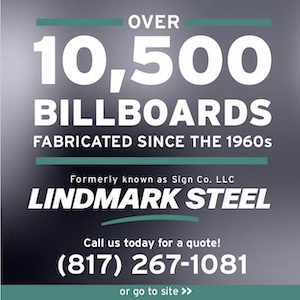 From Richard L. Rothfelder of Rothfelder & Falick L.L.P.
From Richard L. Rothfelder of Rothfelder & Falick L.L.P.
Supreme Court Denies Petition for Writ of Certiorari in Scenic America vs Department of Transportation
On October 16, 2017, the Supreme Court of the United States denied the petition for writ of certiorari filed by Scenic America in a case watched very closely by the billboard industry, Scenic America, Inc. vs Department of Transportation, et al. Billboard Insider asked Houston billboard attorney Richard Rothfelder to explain the factual and legal background of the case, and how it impacts billboard operators across the country.
What ruling did the Supreme Court make in the case on October 16?
The Supreme Court denied the petition for writ of certiorari filed by Scenic America, which sought further appellate review after unfavorable rulings from the federal district and circuit courts. By doing so, the Supreme Court effectively refused to entertain the appeal, thereby letting the judgment and opinion for the Department of Transportation stand.
What was the factual dispute examined by the lower federal courts?
In 2007, the Federal Highway Administration (FHWA) issued a Guidance Memorandum (Guidance) to the states in regards to digital billboards, in order to clarify how to approach the emerging technology. Specifically, it explained that digital billboards are not “flashing, intermittent, or moving” lights and, therefore, do not fall under the ban of the old lighting standards. It further explained the criteria that state regulations of digital billboards should contain: duration of the billboards’ message, the transition time between messages, the billboards’ brightness, sign spacing, and sign location.
Scenic America brought suit in 2013, arguing that the FHWA’s Guidance substantively changed the lighting standards, which violated the Highway Beautification Act of 1965 (HBA) and the Administrative Procedure Act (APA). The Defendants (the Department of Transportation, the FHWA, the Secretary of Transportation, the Federal Highway Administrator, and the Outdoor Advertising Association of America- as an Intervenor) responded that the Guidance simply interpreted the ban and did not violate any law.
Scenic America alleged three problems with the Guidance. First, that the Guidance was a legislative rule that did not go through the notice-and-comment procedure, as required by the APA. Second, the Guidance created a new lighting standard for billboards without agreement between the states and the Secretary of Transportation, as required by the HBA. Third, that it established lighting standards for billboards that were inconsistent with customary use, again in violation of the HBA.
What were the legal holdings and reasoning by the courts?
District Court:
In 2014, the District of Columbia U.S. District Court granted the Defendants’ Motion for Summary Judgment. The district court found that the Guidance was not required to go through the notice-and-comment procedure because it was an interpretative rule. The district court explained the difference between a substantive rule (which creates new law and is required to go through notice-and-comment) and an interpretative rule (which explains existing law and is exempt from the notice-and-comment procedure). The first step in determining if the rule is substantive or interpretative is to apply the four-factor test established in American Mining Congress v. Mine Safety and Health Administration. If there is an affirmative answer to any of the following four factors, then the rule is substantive:
“(1) If in the absence of the rule there would not be an adequate legislative basis for enforcement action or other agency action to confer benefits or ensure the performance of duties, (2) If the agency has published the rule in the Code of Federal Regulations, (3) If the agency has explicitly invoked its general legislative authority, and (4) If the rule effectively amends a prior substantive rule.”
The district court addressed each of these factors and found that the Guidance was interpretative under the American Mining Congress test. The second step in determining whether the rule is substantive or interpretative is to apply the doctrine established in Alaska Professional Hunters Association v. The Federal Aviation Administration, which asks “whether the Guidance effects a significant revision to a prior, definitive interpretation.” The district court found that it did not, and therefore was an interpretative rule.
In regards to the second and third allegations made by Scenic America, the district court found that because the Guidance was interpretative, Scenic America’s arguments failed on both counts.
Circuit Court:
Scenic America appealed the ruling to the U.S. Court of Appeals, District of Columbia Circuit, arguing that the Guidance must be invalidated because it “(1) was not promulgated using notice-and-comment procedures, and (2) violates the HBA, and was therefore promulgated ‘contrary to law’ in violation of § 706 of the [APA].” In 2016, the circuit court found that Scenic America failed to demonstrate standing to bring a notice-and-comment claim and denied the § 706 claim on the merits. Thus, the circuit court affirmed the district court’s granting of summary judgment in regards to Scenic America’s § 706 claim, vacated the judgment in regards to the notice-and-comment claim, and remanded with instructions to dismiss the notice-and-comment claim for lack of jurisdiction.
What are the practical ramifications of the case for billboard operators?
The Outdoor Advertising Association of America (OAAA) intervened in the case, demonstrating its importance for billboard operators across the county. If Scenic America had prevailed, the FHWA Guidance authorizing digital billboards under federal law would have been invalidated, a devastating result for the industry. However, since the states and many cities still regulate digital billboards, with some permitting and others prohibiting them, no immediate change in the operation or regulation of digital billboard is expected. The Guidance remains in place as an interpretation of the FWHA’s standards for digital billboards.
What’s next for Scenic America and the billboard industry?
The Supreme Court’s denial of the petition for writ of certiorari is end of the road for Scenic America’s legal challenges in this particular case. However, continue to expect Scenic America, and its state and local affiliates, to be active in other legal and legislative challenges to the billboard industry throughout the country. Likewise, look for the OAAA and other billboard advocates to continue to fight in the courts and legislatures for constitutional protections and reasonable regulations on the industry.
[wpforms id=”9787″]
Paid Advertisement

















